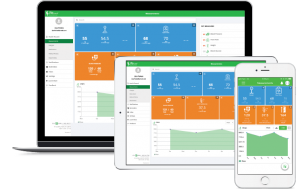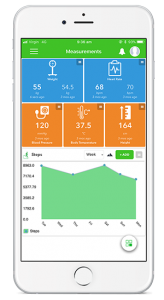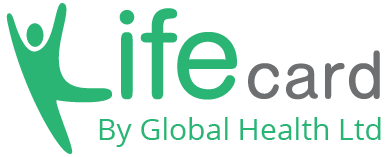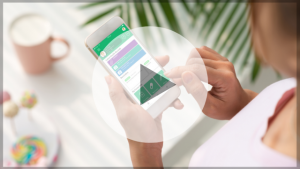If you’re anything like us and most people, you have a number of health concerns and may visit multiple doctors and pharmacies. Keeping track of it all can be challenging to say the least. With a personal health record, such as Lifecard, you can gather, record and manage all of that information in one, easily accessible location.
A personal health record (PHR), to put it simply, is a collection of information about your health. So, if you have a vaccination record or a folder of medical papers, you already have a basic personal health record which means you’ve probably encountered the biggest drawback of paper records: You rarely have them with you when you need them. Let the Lifecard app remedy that problem by making your information accessible to you anywhere, any time.
So what do you put into your PHR? In general, your PHR needs to include anything that helps you and your doctors manage your health, starting with the basics:

- Your name, address and contact number
- Medicare number
- Your doctors’ names and phone numbers
- Allergies, including drug allergies
- Your medications, including dosages
- List and dates of illnesses and surgeries
- Chronic health problems, such as high blood pressure
- Living will or advance directives
- Family history
- Immunisation history
You can also add information about what you’re doing to stay healthy and prevent disease, such as:
- Home blood pressure readings
- Exercise and dietary habits
- Health goals, such as stopping smoking or losing weight
PHRs are not the same as electronic health records (EHRs), also called electronic medical records (EMRs), which are owned and maintained by doctors’ offices, hospitals or health insurance plans.
EHRs typically contain the same basic information you would put in a PHR, such as your date of birth, medication list and drug allergies. But EHRs contain more extensive information because they’re used by health care providers to store visit notes, test results and much more.
Having a PHR like Lifecard can be a lifesaver, literally. In an emergency, you can quickly give first responders vital information, such as diseases you’re being treated for, medications you take, drug allergies, and contact information for your doctor. What’s even better is that if your medical provider uses Lifecard they can send and share your results with you via the app.
Lifecard empowers you to manage your health between visits. For example, it enables you to:
- Track and assess your health Record and track your progress toward your health goals, such as lowering your cholesterol level.
- Make the most of doctor visits Be ready with questions for your doctor and information you want to share, such as blood pressure readings since your last visit.
- Manage your health between visits Upload and analyse data from home-monitoring devices such as a blood pressure cuff. And remind yourself of your doctor’s instructions from your last appointment.
- Get organised Track appointments, vaccinations, and preventive or screening services, such as mammograms. In fact, one study found that when parents used personal health records for their children, the children were more likely to get their preventive well-child checkups on time.

